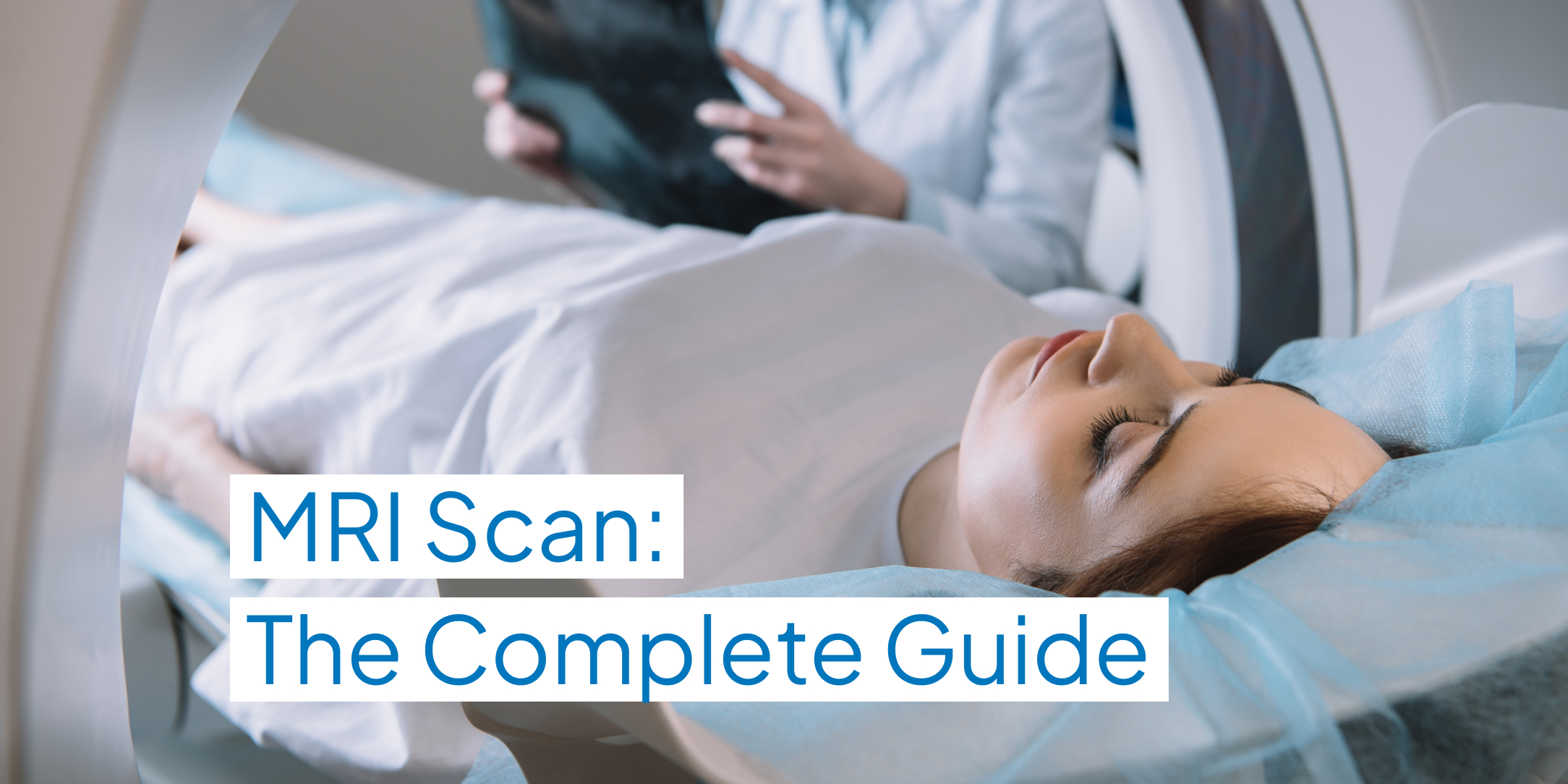Understanding Hip Pain: Common Causes and Treatments
Understanding the common causes and effective treatments for hip pain is crucial for managing symptoms and maintaining an active lifestyle.
Quick Overview of Hip Anatomy
The hip joint is one of the largest and most important joints in the human body, providing stability and a wide range of motion necessary for activities such as walking, running, and jumping. It is a ball-and-socket joint where the femoral head (the ball) fits into the acetabulum (the socket) of the pelvis. This structure allows for multidirectional movement while maintaining stability. The joint is supported by strong ligaments, tendons, and muscles, including the hip flexors, extensors, and rotators. Additionally, the labrum, a ring of cartilage, surrounds the acetabulum, providing cushioning and aiding in joint stability. Proper functioning of this complex system is essential for maintaining mobility and balance.
Key Causes of Hip Pain and Swelling
-
Arthritis:
Osteoarthritis: A degenerative joint disease where the cartilage cushioning the ends of the bones in the hip joint gradually wears away, leading to pain and stiffness.
Rheumatoid Arthritis: An autoimmune condition where the immune system attacks the synovium (lining of the joints), causing inflammation, pain, and joint damage. -
Hip Fractures
Traumatic Injuries: Breaks in the hip bone often due to falls or accidents.
Osteoporosis-related Fractures: Fractures that occur due to weakened bones from osteoporosis, common in older adults. - Bursitis: Inflammation of the bursae, small fluid-filled sacs that cushion the hip joint, often due to repetitive activities or overuse.
- Tendinitis: Inflammation of the tendons around the hip, commonly caused by overuse or strain from physical activity.
- Muscle or Tendon Strain: Overuse injuries or acute strains from sudden movements can lead to pain and limited mobility.
- Labral Tears: Tears in the labrum, the cartilage surrounding the hip joint, often from injury or structural abnormalities, causing pain and instability.
-
Hip Impingement:
Femoroacetabular Impingement (FAI): A condition where extra bone grows along one or both of the bones that form the hip joint, leading to friction during movement and pain. - Hip Dysplasia: A congenital condition where the hip joint doesn't develop properly, leading to instability and pain.
- Sciatica: Compression or irritation of the sciatic nerve, which runs from the lower back to the legs, can cause referred pain in the hip area.
-
Infections
Septic Arthritis: An infection in the joint, causing severe pain, swelling, and fever.
Osteomyelitis: An infection in the bone, leading to pain, fever, and swelling. - Referred Pain: Pain originating from the lower back or pelvis that manifests in the hip region, often due to issues like herniated discs or spinal stenosis.
- Hip Bone Cancer: Primary or metastatic bone cancer that affects the hip, causing persistent pain as the disease progresses and affects the bone structure and surrounding tissues.
Causes of Hip Swelling and How to Reduce it
Hip swelling can arise from conditions such as:
- Bursitis: Inflammation of the bursae, fluid-filled sacs that cushion the hip joint, often due to overuse or repetitive movements.
- Arthritis: Including osteoarthritis (degeneration of joint cartilage) or rheumatoid arthritis (autoimmune joint inflammation).
- Injuries: Such as fractures (broken bones), strains (overstretching or tearing of muscles or tendons), or contusions (bruising).
- Infections: Such as septic arthritis, an infection of the joint, or cellulitis, a skin infection that can spread to joints.
- Gout: A form of arthritis caused by uric acid crystals forming in joints, including the hip.
Seeking medical advice is crucial for accurate diagnosis and appropriate treatment of underlying conditions causing hip swelling.
What Does a Hip Lump Indicate?
A lump in the hip area can indicate various underlying conditions, ranging from benign to potentially serious. Common causes include lipomas, which are benign fatty tumours, or cysts such as synovial or ganglion cysts that can develop near joints. These often present as painless lumps under the skin and are generally harmless unless they grow large enough to cause discomfort or affect mobility.
However, a lump in the hip can also signal more concerning issues such as bone tumours, which may be primary (originating in the bone) or metastatic (spreading from other parts of the body). Bone tumours can cause pain, swelling, and a noticeable lump at the site. In rare cases, a lump could indicate an infection or an inflammatory condition affecting the hip joint or surrounding tissues.
If you discover a lump in your hip, it's crucial to seek medical evaluation promptly. A healthcare professional can perform a thorough examination, possibly including imaging tests like X-rays or MRI scans, to determine the cause of the lump.
Understanding Hip Numbness: Causes and Solutions
Hip numbness can be a disconcerting sensation that may indicate various underlying medical conditions. Common causes include:
- Sciatica: Compression or irritation of the sciatic nerve, often due to a herniated disc in the spine or spinal stenosis (narrowing of the spinal canal), leading to numbness, tingling, or weakness in the hip and down the leg.
- Herniated Disc: When the soft inner core of a spinal disc pushes through a tear in the outer layer, it can press on nearby nerves, causing symptoms like numbness and pain that radiate to the hip area.
- Spinal Stenosis: Narrowing of the spinal canal that can compress the spinal cord or nerves, commonly causing numbness, tingling, and weakness in the hips and legs.
- Peripheral Artery Disease (PAD): Reduced blood flow to the legs and hips due to narrowing of arteries, leading to numbness and cramping pain, especially during physical activity.
- Diabetic Neuropathy: Nerve damage caused by diabetes that can result in numbness, tingling, or burning sensations in the hips and legs.
Dealing with Hip Tingling Sensations
If you experience persistent or recurrent hip numbness, it's important to seek medical attention promptly. A healthcare provider can conduct a thorough evaluation
Unexpected Weight Loss and Hip Pain: What You Need to Know
Unexpected weight loss and hip pain can signal serious underlying conditions such as cancer, infections, or inflammatory disorders. Prompt medical evaluation is crucial to diagnose the cause, as early intervention can significantly impact treatment outcomes and overall health.
Symptoms and Treatment Options for Hip Arthritis
Osteoarthritis is a degenerative joint disease characterised by the gradual breakdown of cartilage in the joints, including the hip. As cartilage wears away, bones may rub against each other, leading to pain, stiffness, and reduced mobility. Risk factors such as ageing, joint overuse or injury, genetics, and obesity contribute to its development.
Symptoms often worsen over time and can include joint pain during or after movement, stiffness, and a decreased range of motion. Treatment focuses on managing symptoms through medications, physical therapy to strengthen muscles and improve joint flexibility, lifestyle changes such as weight management, and in some cases, surgical interventions like joint replacement to relieve pain and restore function. Early diagnosis and effective management strategies can help individuals with osteoarthritis maintain an active lifestyle and minimise joint-related discomfort.
Identifying and Managing a Hip Labral Tear
A hip labral tear involves damage to the ring of cartilage (labrum) surrounding the hip socket. Symptoms include hip pain, stiffness, clicking sensations, and limited range of motion. Diagnosis typically involves imaging tests like MRI or CT scans. Management options vary depending on the tear's severity and may include rest, physical therapy to strengthen hip muscles and improve joint stability, pain management with anti-inflammatory medications or injections, and in some cases, arthroscopic surgery to repair or remove the torn labrum. Early diagnosis and appropriate treatment can help alleviate symptoms and prevent further hip joint damage.
Causes and Relief Strategies for Hip Tendonitis
Causes
- Overuse: Repeated stress from activities like running or cycling.
- Anatomical Factors: Hip abnormalities such as impingement or dysplasia.
- Biomechanical Issues: Poor form during physical activities.
- Degenerative Changes: Wear and tear on tendons due to ageing.
Relief Strategies
- Rest and Modification: Avoid aggravating activities and gradually resume as tolerated.
- Ice Therapy: Apply ice packs to reduce inflammation.
- Physical Therapy: Exercises to strengthen muscles and improve flexibility.
- Medications: Use NSAIDs (if you are safe to do so) for pain and inflammation relief.
- Injections: Corticosteroid injections for severe cases.
Managing hip tendonitis involves these approaches to alleviate pain, enhance mobility, and prevent further aggravation. Consulting a healthcare professional ensures proper diagnosis and personalised treatment.
What is a Hip Pointer Injury and How to Treat It?
A hip pointer injury, typically resulting from direct impact to the iliac crest, causes intense pain, swelling, and bruising around the hip area. Treatment focuses initially on managing symptoms with rest, ice, compression, and elevation to reduce pain and inflammation. Over-the-counter pain relievers can help alleviate discomfort. It's crucial to avoid activities that strain the hip until symptoms subside.
Physical therapy plays a vital role in rehabilitation, guiding patients through exercises that restore hip strength, flexibility, and range of motion. Gradual return to activities should be supervised to prevent re-injury. In cases of severe pain or difficulty bearing weight, seeking medical evaluation is recommended to rule out fractures or other complications, ensuring appropriate care for optimal recovery.
Recognising and Addressing Hip Bone Pain
Hip bone pain can significantly impact your quality of life, making it crucial to identify and manage it effectively. Here's a concise guide to recognizing and addressing hip bone pain:
Recognising Hip Bone Pain
- Location of Pain: Commonly felt in the groin, outer thigh, buttocks, or directly over the hip joint.
- Type of Pain: Ranges from a dull ache to sharp, stabbing sensations, either constant or activity-related.
- Associated Symptoms: Stiffness, reduced range of motion, swelling, and tenderness.
- Activity Impact: Pain may worsen with walking, running, climbing stairs, or prolonged sitting, and might improve with rest.
Addressing Hip Bone Pain Symptoms and Treatment Options for Hip Arthritis
- Rest and Activity Modification: Avoid activities that worsen the pain and gradually reintroduce them as symptoms improve.
- Cold and Heat Therapy: Use ice packs to reduce inflammation and heat to relax muscles and improve blood flow.
- Medications: Over-the-counter pain relievers like ibuprofen or acetaminophen can help (if you are safe to do so); severe cases may require prescribed medications or corticosteroid injections.
- Physical Therapy: Engage in exercises designed to strengthen hip muscles, improve flexibility, and enhance joint stability.
- Assistive Devices: Use canes or crutches to alleviate pressure on the hip joint.
A healthcare professional can provide a thorough evaluation, accurate diagnosis, and a tailored treatment plan.
Stretching and Exercise: The importance of stretching and exercise in managing hip pain
Here are some quick examples of stretching and exercises beneficial for managing hip pain:
Stretching Exercises:
- Hip Flexor Stretch: Kneel on one knee, with the other foot in front, and gently lean forward to stretch the front of the hip.
- Piriformis Stretch: Cross one leg over the other and gently pull the knee towards the opposite shoulder to stretch the buttock area.
- Hamstring Stretch: Sit on the floor with one leg extended and reach towards the foot, keeping the back straight, to stretch the back of the thigh and hip.
Strengthening Exercises:
- Hip Abductor Strengthening: Side leg raises while lying on your side to strengthen the muscles on the outside of the hip.
- Bridge Exercise: Lie on your back with knees bent and lift hips off the floor, squeezing the buttocks, to strengthen the gluteal muscles and hamstrings.
-
Squats: Stand with feet shoulder-width apart and lower into a sitting position, keeping knees over ankles, to strengthen quadriceps, hamstrings, and gluteal muscles.
When and Why to Get an MRI for Hip Pain
An MRI for hip pain is typically recommended to help identify soft tissue injuries such as ligament or tendon tears, assess joint inflammation or infection, and detect structural abnormalities like labral tears. MRI is valuable in diagnosing hip conditions that require detailed visualisation for accurate treatment planning.
Understanding MRI Scans for Hip Arthritis
X-rays are effective for assessing bone structure and severe joint damage. MRI scans can provide visualisation of soft tissues and other signs of hip osteoarthritis, making them a useful tool for osteoarthritis for accurate diagnosis and treatment planning in cases where detailed soft tissue evaluation is necessary.
MRI Scans for Diagnosing Hip Labral Tears
MRI (Magnetic Resonance Imaging) scans are highly effective in diagnosing hip labral tears by providing detailed images of the soft tissues surrounding the hip joint. This imaging modality allows orthopaedic specialists to visualise the labrum, a ring of cartilage that lines the hip socket, and detect tears or abnormalities with high resolution.
Using MRI to Detect Hip Tendonitis
MRI (Magnetic Resonance Imaging) is a valuable tool for detecting hip tendonitis by providing detailed images of the soft tissues around the hip joint. It allows healthcare providers to assess the condition of tendons, identifying signs of inflammation, thickening, or degeneration that characterise tendonitis. MRI can differentiate between tendonitis and other conditions causing hip pain, such as bursitis or labral tears, by visualising the specific areas of tendon involvement and any associated fluid accumulation or structural changes.
Diagnosing Hip Pointer Injuries with MRI Scans
Diagnosing hip pointer injuries with MRI (Magnetic Resonance Imaging) scans involves using this advanced imaging technique to assess soft tissue damage and bruising around the iliac crest. MRI provides detailed cross-sectional images that enable healthcare providers to evaluate the extent of tissue injury, including muscles, tendons, and surrounding structures near the hip bone.
Conclusion
Hip MRI is a valuable diagnostic tool used to diagnose and manage various hip conditions. It is a non-invasive procedure that does not require any incisions or injections. By understanding how hip MRI works and what to expect during the procedure, you can feel more comfortable and prepared for your appointment.
If you're experiencing hip pain or other symptoms, consider booking a hip MRI to get a clear diagnosis and start your journey to better health. Visit GetScanned today to schedule your MRI and take the first step toward understanding and managing your hip health. Don't wait your health is too important to delay. Book your MRI with GetScanned now!
GetScanned Today
FAQs
1. What is a Hip MRI scan?
A Hip MRI (Magnetic Resonance Imaging) is a painless, non-invasive scan that uses magnetic fields and radio waves to create detailed images of the hip joint, bones, cartilage, tendons, and surrounding soft tissues.
2. Why would I need a Hip MRI?
You may need a Hip MRI if you have persistent pain, swelling, reduced mobility, or symptoms that haven’t improved with basic treatment. It can help diagnose conditions such as arthritis, labral tears, tendonitis, hip impingement, or fractures.
3. How should I prepare for my Hip MRI?
Wear comfortable, loose-fitting clothing without metal zips or buttons. You may be asked to change into a gown. Inform the clinic if you have any implants, pacemakers, or metal fragments in your body.
4. Does a Hip MRI hurt
No – the scan is completely painless. You will need to remain still for clear images, and the machine may produce tapping or humming sounds during the scan.
5. How long does a Hip MRI take?
A standard Hip MRI takes around 20–30 minutes, depending on the level of detail required.
6. When will I get my Hip MRI results?
At GetScanned, your images and radiologist report are usually ready within 24–48 hours, so you can quickly discuss treatment options with your healthcare provider.
7. How much does a private Hip MRI cost in the UK?
Costs vary by location and provider, but at GetScanned you get transparent, upfront pricing with no hidden fees.




